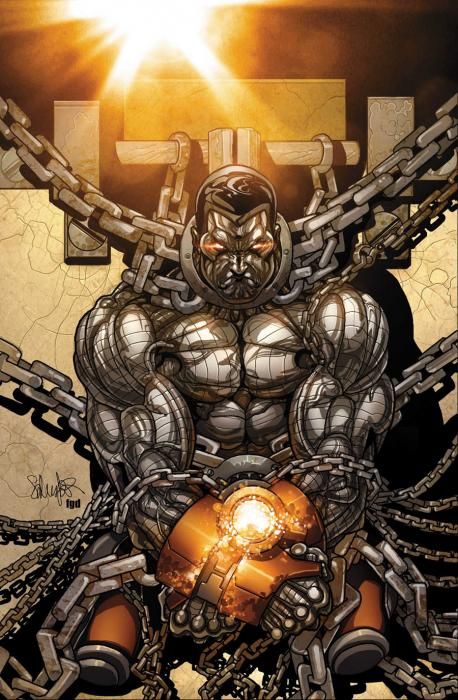Notionally the start of the second arc, "Cable and X-Force" #6 by Dennis Hopeless and Salvador Larroca seems to be a fairly direct continuation of the book's existing storyline. The issue's focus on Colossus gives it a distinct centrepiece, exploring the character's desire to atone for his recent crimes as he turns himself in.
There are guest-stars abound with Wolverine, Shadowcat, Boom Boom and Cyclops making appearances, with the former pair providing a sounding board for Colossus. Their position in the book strengthens the title's ties to continuity in a manner perhaps unexpected of a Marvel NOW! comic: not only does it rely on a solid understanding of the stories that preceded the title's launch, it references them directly.
Hopeless himself certainly seems to have a strong grasp of the X-characters and their relationships. Wolverine and Colossus' interactions feel authentic, as does Kitty's monologue, even though neither are regular cast members. Boom Boom's voice is good fun, somewhere between '90s "X-Force" and "Nextwave," injecting some much-needed sugar into the title's otherwise heavily masculine attitude.
Where the issue loses a little steam is in the secondary plot (or, depending on your perspective, the primary one) as the remaining team-members attempt to hijack an alien space ship from a S.W.O.R.D. facility. As an action sequence, it's slightly too oblique about what the characters are doing and why -- perhaps aiming for mystery, but falling short. Dr. Nemesis, Forge and Cable get short shrift in this issue because it's just too hard to get on-side with cyphers and their nebulous goal.
It's possible that some of the book's problems are due to the art. Larroca's apparently photo-reffed figures are often problematic, evidencing some common characteristics associated with the technique: misplaced emotions, stiff expressions and strangely-contextualised poses. It's strange to see him so reliant on photo-reffing, because the one character that can't be traced from a photo -- the alien in The Raft -- provides by far the best image in the book, both creepy and well realized.
When the action moves outside the boundaries of conversation, things get a little better in some ways and worse in others. The double-page spread of the alien craft looks great, but it's tough to tell whether it's supposed to be dematerializing, bursting out of the ground or even dropping from the sky. Within individual panels, the storytelling works, but the over-use of widescreen panels makes the book monotonous in both pace and tone. The art isn't what you'd call bad, but it harms the story as much as helps it. On "Cable and X-Force," Hopeless clearly tries to show rather than tell, so there's a definite sense that with an artist better-suited to that technique, this mostly good book could actually become great.

